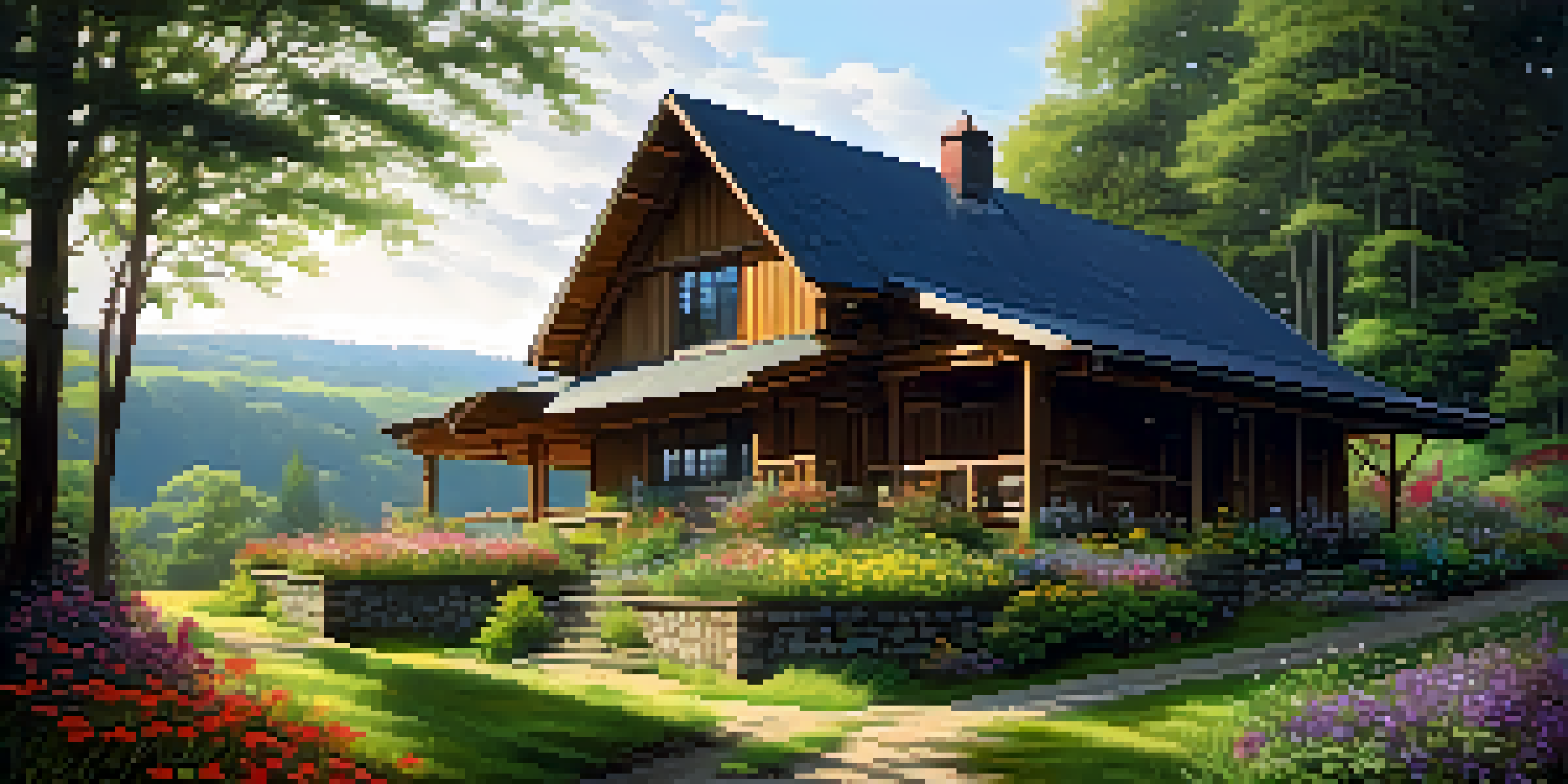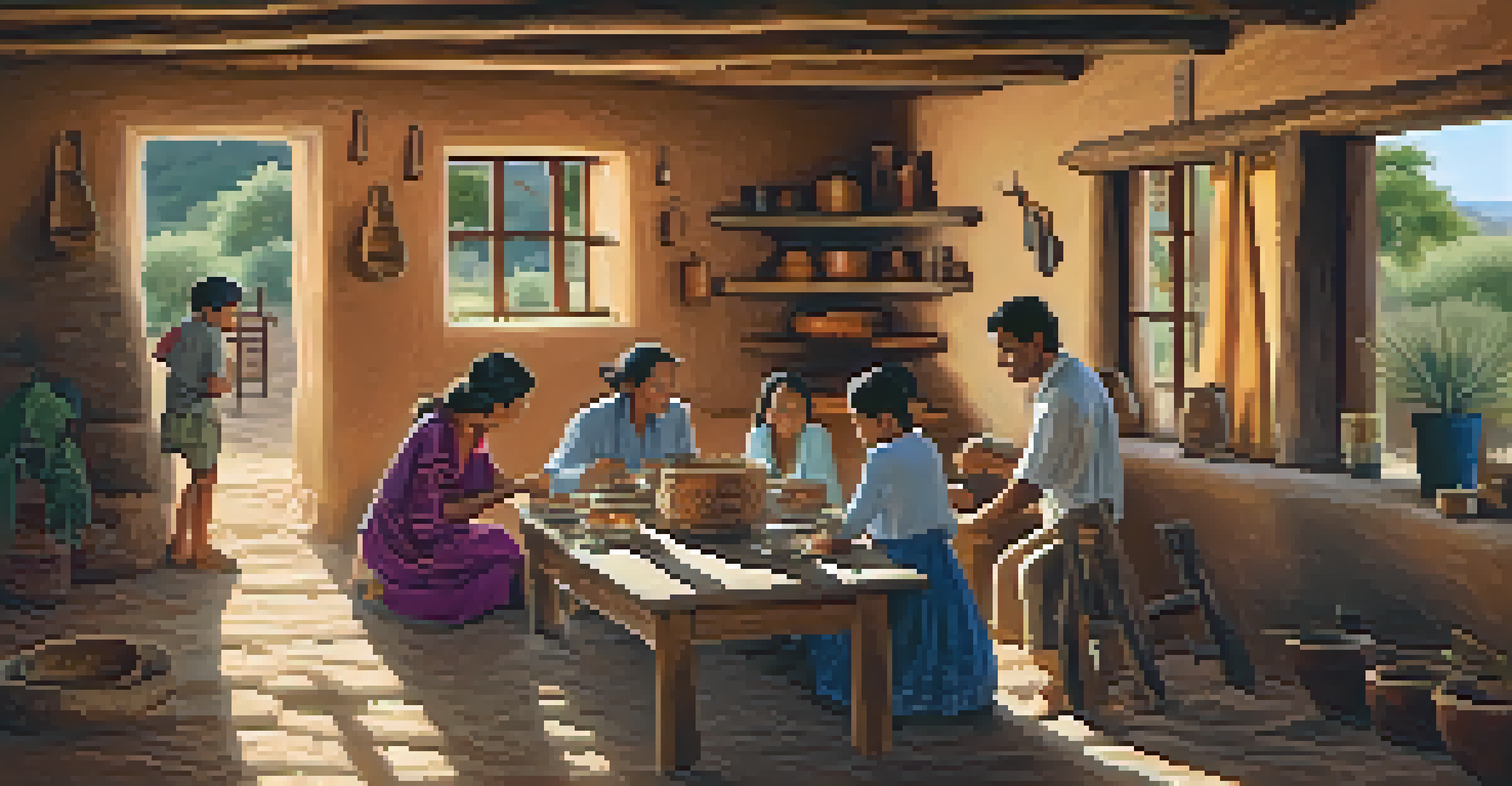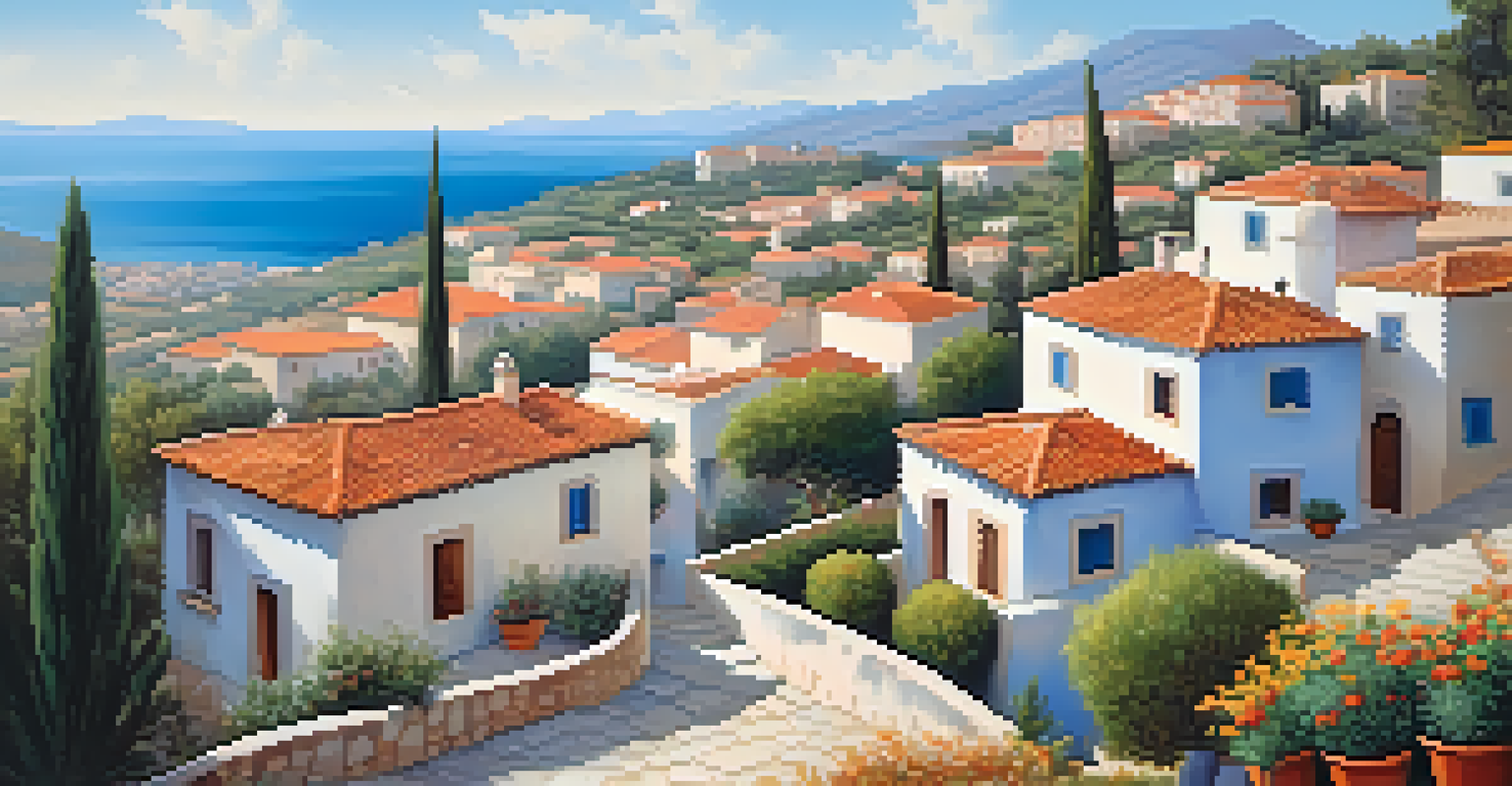Rural Architecture: Exploring Traditional Village Homes and Styles

Understanding Rural Architecture and Its Importance
Rural architecture reflects the cultural and environmental context of a region, showcasing unique design elements. These structures often embody the traditions and lifestyles of the people who inhabit them. By examining rural architecture, we can gain insights into local customs and historical development.
Architecture is the learned game, correct and magnificent, of forms assembled in the light.
This type of architecture prioritizes functionality, often using locally sourced materials that harmonize with the surrounding landscape. For instance, houses built from timber in forested areas or stone in mountainous regions highlight a deep connection to the environment. The designs often evolve based on climate, available resources, and the community's needs.
Understanding rural architecture not only preserves cultural heritage but also inspires sustainable practices. As urbanization continues, these traditional designs remind us of the importance of maintaining a balance between modern living and ecological responsibility.
Common Features of Traditional Village Homes
Traditional village homes often share distinct characteristics that define their charm. Many are single-story structures with sloping roofs, designed to withstand heavy rainfall and snow, particularly in mountainous regions. This practical approach to design ensures longevity and safety for residents.

Materials play a crucial role in the aesthetics and functionality of these homes. For instance, adobe houses in arid regions use mud bricks, providing natural insulation against heat. Similarly, thatched roofs made from local grasses not only offer shelter but also blend seamlessly into the rural landscape.
Rural Architecture Reflects Culture
Rural architecture showcases the traditions and lifestyles of local communities, offering insights into their customs and historical development.
Additionally, open floor plans are common in these homes, promoting family interaction and community bonding. This design choice reflects the social fabric of rural life, where gatherings and shared experiences are integral to daily living.
Regional Variations in Rural Architecture
Rural architecture varies significantly across different regions, each influenced by local climate, geography, and culture. For instance, Scandinavian homes often feature wood construction and large windows to maximize natural light during long winters. In contrast, Mediterranean homes use stucco walls and tiled roofs to keep interiors cool in the hot sun.
The buildings we inhabit, and the spaces we create, are a reflection of our culture, values, and aspirations.
In Asia, traditional homes like the Japanese 'minka' showcase a unique blend of functionality and aesthetics, with sliding doors and tatami flooring that adapt to various activities. These regional styles not only highlight differing environmental adaptations but also reflect the lifestyles and values of their inhabitants.
Understanding these variations enriches our appreciation of global architecture. Each style tells a story of adaptation and resilience, illustrating how communities creatively respond to their surroundings over time.
The Role of Sustainable Practices in Rural Architecture
Sustainability is a core principle of rural architecture, with traditions often emphasizing eco-friendly practices. Many traditional homes utilize renewable resources and passive design techniques to minimize energy consumption. This focus on sustainability is not just a modern trend but a long-standing practice rooted in necessity.
For example, the use of natural ventilation and strategic window placement helps maintain comfortable indoor temperatures without relying on artificial cooling systems. Moreover, rainwater harvesting systems in traditional homes illustrate how communities have historically managed water resources efficiently.
Sustainability in Traditional Homes
Many rural homes emphasize eco-friendly practices and materials, illustrating a long-standing commitment to sustainability rooted in necessity.
By revisiting these sustainable practices, modern architects can draw inspiration for eco-friendly designs that honor the environment. This fusion of old and new can lead to innovative solutions that address contemporary challenges while respecting cultural heritage.
Influences of Modernity on Rural Architecture
As society evolves, so does the landscape of rural architecture. The influx of modern materials and technologies has significantly impacted traditional building practices. While some see this as a threat to cultural identity, others view it as an opportunity for innovation and adaptation.
For instance, the incorporation of eco-friendly materials like bamboo and recycled components into new rural homes reflects a blend of tradition and modernity. Such innovations can enhance sustainability while providing modern comforts that enhance residents' quality of life.
However, striking a balance between modernization and preserving traditional aesthetics is crucial. Maintaining architectural integrity while embracing new technologies can lead to unique designs that honor the past and embrace the future.
Cultural Significance of Rural Architecture
The cultural significance of rural architecture extends beyond mere aesthetics; it embodies the identity and heritage of communities. Each home, with its unique design, tells a story of the people who built it and the traditions they uphold. These structures often serve as gathering places, fostering community ties and shared values.
Moreover, festivals and cultural events often take place in these traditional settings, reinforcing their role as focal points in village life. For example, many rural communities celebrate harvest festivals in central courtyards, where homes act as backdrops for communal festivities.
Modernity Challenges Traditional Design
The influence of modern materials and technologies poses challenges to traditional rural architecture, risking the loss of cultural identity and diversity.
Preserving rural architecture is vital for maintaining cultural heritage. These homes are not just buildings; they are symbols of resilience, creativity, and the shared history of the people who reside in them.
Challenges Facing Traditional Rural Architecture
Despite their cultural significance, traditional rural homes face numerous challenges today. Rapid urbanization and changing lifestyles often lead to the neglect or demolition of these cherished structures. Younger generations may prefer modern conveniences over traditional designs, risking the loss of architectural diversity.
Additionally, climate change poses threats to these homes, particularly in vulnerable areas where extreme weather events are becoming more common. Traditional materials may not withstand these challenges, highlighting the need for adaptive strategies that honor historical designs while ensuring resilience.

Addressing these challenges requires a collaborative effort from communities, architects, and policymakers. By promoting awareness and providing resources for preservation, we can safeguard the rich legacy of rural architecture for future generations.